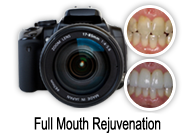Ridge Regeneration Springfield MA
What is Ridge Regeneration?
Preserving the alveolar ridges after tooth extraction is important if the patient plans on getting dental implants to replace the missing tooth. But, at times during tooth loss, significant defects in the alveolar bone make ridge regeneration necessary to expand the area where the implants can be embedded. In Springfield, Massachusetts, Dr. David Peck has been performing ridge regeneration for his patients in order to help them get the implants that are necessary to preserve the functionality and structure of their mouths.
What are the Sources of Bone Grafts for Ridge Regeneration?
Because of the lost bone mass, ridge regeneration calls for bone grafts that can be obtained from autologous sources, meaning bone from the patient himself, or from other external sources. Autologous sources of bone grafting material include the iliac crest from the patient’s hip, bone grafts from the chin area, or from the coronoid process in the patient’s jaw area.
Allografts may also be used in ridge regeneration. These are bone grafts that are collected from human donors, other than the person receiving the graft. In the past, allograft bones have been taken from cadavers and stored in bone banks. Bone banks are a good source of living human bone grafts and can supply them as fresh or fresh frozen bones, freeze-dried bone allografts, or demineralized freeze-dried bone allografts.
Artificial bones can be created using ceramic materials such as calcium phosphate, calcium sulfate, or Bioglass. All of these are biologically active materials that can be placed strategically in the area requiring bone regeneration with growth irons such as strontium or bone marrow aspirate to enhance their biological activity.
How is Ridge Regeneration Performed?
A full thickness flap is created on the gum tissue by making strategic incisions in the region where the bone is to be augmented. When the dentist has access to the defective bone region, the graft material will be put in place and a reinforced membrane will be fixed in place to keep the bone graft in position. This protective membrane is usually anchored with tacks to ensure that it does not move or becomes displaced during recovery. The flap will then be closed over the membrane and will be sutured closed. It will take about 8 to 12 weeks for ridge regeneration to be complete, with a reevaluation usually done at the nine-month mark using a CAT scan to determine whether new bone tissue was successfully grown in the area.




